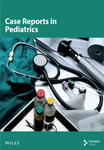Clinical Presentation and Outcome of Five Neonates With Enterovirus Central Nervous System Infection: Contrasting One Kawasaki-Like Case With Cardiac Involvement and Seizures With Four Benign Cases
Abstract
Background and Objectives: Enteroviruses (EV) mainly cause mild infections but have been found to affect neonates more severely. The aim of this study is the description of symptoms, laboratory findings, treatment, duration of hospital stay, imaging, and outcome in five neonates presenting with EV infection of the central nervous system (CNS).
Case Study: All patients had signs of sepsis and/or CNS infection at first presentation and were diagnosed using cerebrospinal fluid (CSF) reverse transcriptase polymerase chain reaction (RT-PCR). One developed seizures and dilated coronary arteries and recovered after treatment with levetiracetam, intravenous immunoglobulins (IVIGs), prednisolone, and acetylsalicylic acid. This patient was also the only one to show CSF abnormalities including mononuclear pleocytosis. C-reactive protein in blood was slightly elevated in 3/5, while interleukin-6 was normal at onset and later increased (58.7–310 mg/dL) in all patients. Neutrophil-to-lymphocyte ratio was elevated (1.02–4.83) in 5/5. Antibiotics were given for 4–7 days; hospital stay lasted 7–13 days. Cerebral ultrasound was done in 2/5 and was normal in both. The patient who developed seizures underwent brain magnetic resonance imaging without pathological findings. The clinical outcome was favorable in all of our five patients.
Conclusions: In neonates who appear septic without an apparent focus, EV CNS infection should be considered and can be diagnosed by CSF PCR testing. Diagnosis leads to earlier discontinuation of antibiotic treatment and shorter hospital stay. Neonates with EV infection should be screened for cardiac complications and in severe cases treated with IVIG. CSF abnormalities might predict a more severe disease course and justify closer monitoring.
Conflicts of Interest
Matthias Baumann received compensation for advisory boards and speaker honoraria from Novartis, Biogen, and Roche. The other authors declare no conflicts of interest.
Open Research
Data Availability Statement
Any data not published within the article will be made available in anonymized form on request from any qualified investigator.




